
These relays are designed to switch DC loads, e.g solenoid valves, brakes, LEDs, motors (possibly on AC mains under specific conditions).
celduc® relais offers a complete range of DC solid state relays up to 1700Vdc, 0 to 150A.
The switching component of an AC Solid State Relay is a Thyristor, also named SCR (for silicon controlled rectifier) or triacs. Thyristors are control gate diodes. They are conductors in one direction only.
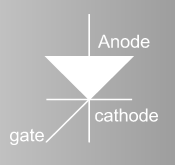
For DC-to-DC Solid State Relays transistors are used as switching elements. The type of transistor used could be Bipolar, IGBT (for Insulated Gate Bipolar Transistor) or Mosfet (for Metal Oxide Semiconductor Field Effect transistor). The selection of the proper technology will depend on your application.
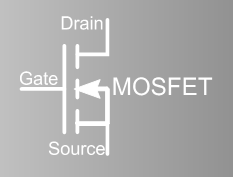
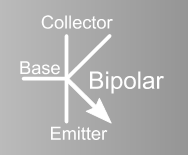
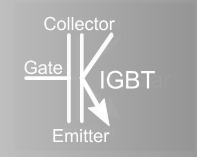
-Turn ON : Current or voltage in the base or gate
-Keep ON : Current or voltage in the base or gate
-Turn OFF : No current or voltage in the base or gate
Why for DC ? Because it can be switched OFF at any time by removing the control
Why not AC ? Thyristor switching is prefered because of its zero current opening capability
-Very low voltage drop at low voltage (MOSFET)
-Possibility to open at any time
Caution : Current at turn OFF is the load current. It means it can be as high as 150A ! A voltage protection is mandatory! The protection on these relays is generally a parallel mounted “free wheel” diode on the load if it is inductive.
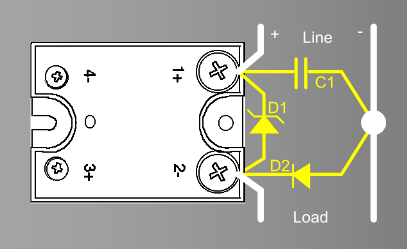
At celduc® all possible technologies are available :
1-MOSFET : For applications requiring transient overcurrent withstand (motors).
2-BIPOLAR : For applications where a low control current is required.
3-IGBT : For high voltage applications (> 600VDC)
Let us introduce you these different DC switching technologies more in details.
DC Mosfet Solid State Relays are ideal for applications requiring transient overcurrent withstand (motors).
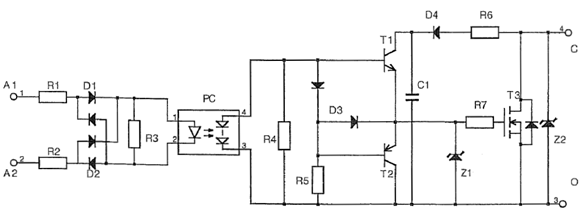
The output current depends on the gate voltage.
On MOSFET DC SSR (e.g. SCM, SOM, SPD, SKLD…), the control current generates voltage through PC.
Advantage : The SSR has a very low voltage drop for low load voltage
Disadvantage : The control current is quite high due to the low efficiency of the photovoltaic generator. High voltage drop for high load voltage.
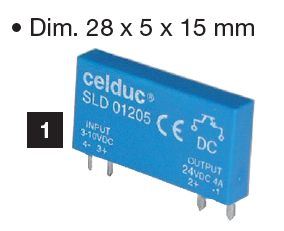
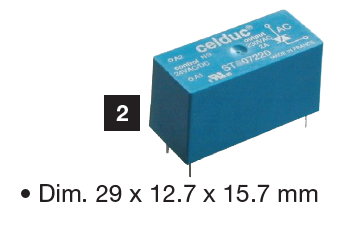
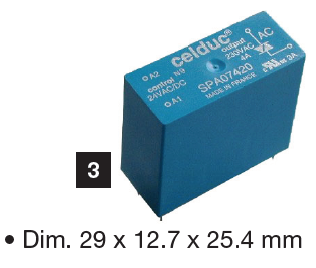
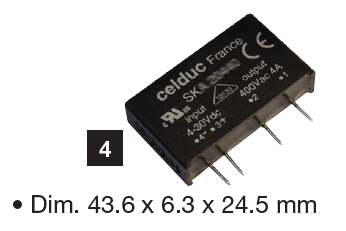
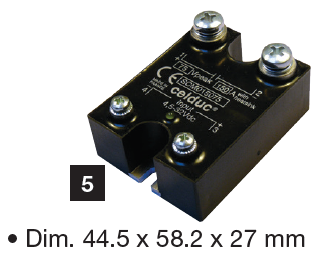
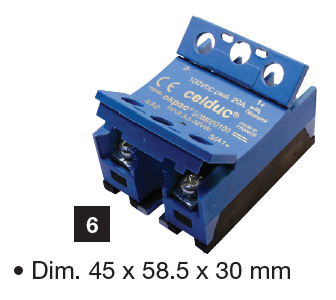
DC Bipolar Solid State Relays are recommended for applications where a low control current is required.
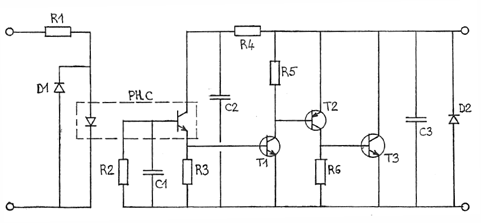
It is a current amplifier. The output current depends on the base current.
On bipolar DC SSR (e.g. SCC, SGC, SKD…), the control current is amplified through PHC, T1, T2 to T3.
Advantage : The SSR can be controlled by a very small current
Disadvantage : The voltage drop is quite high at low load voltage even at low load current.
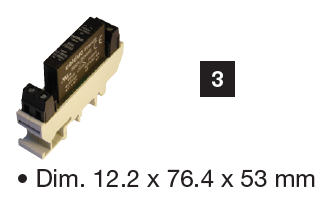
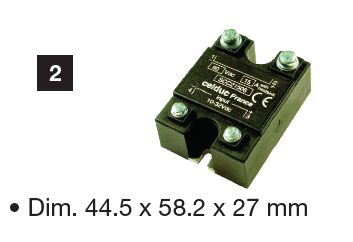
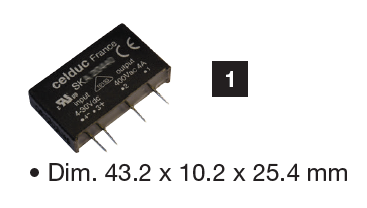
DC IGBT Solid State Relays are recommended for high voltage applications (> 600VDC).

The output current depends on the gate voltage.
On IGBT DC SSR (e.g. SCI and SDI), the control current generate voltage through PHV.
Advantage : The SSR has a low voltage drop for high load voltage
Disadvantage : The control current is quite high due to the photovoltaic generator low efficiency
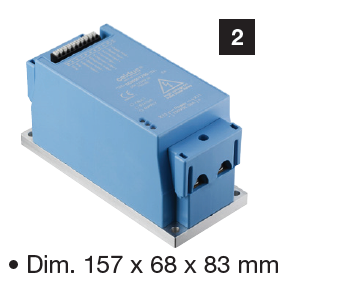
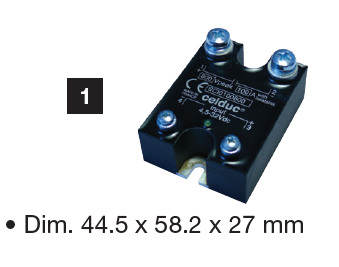
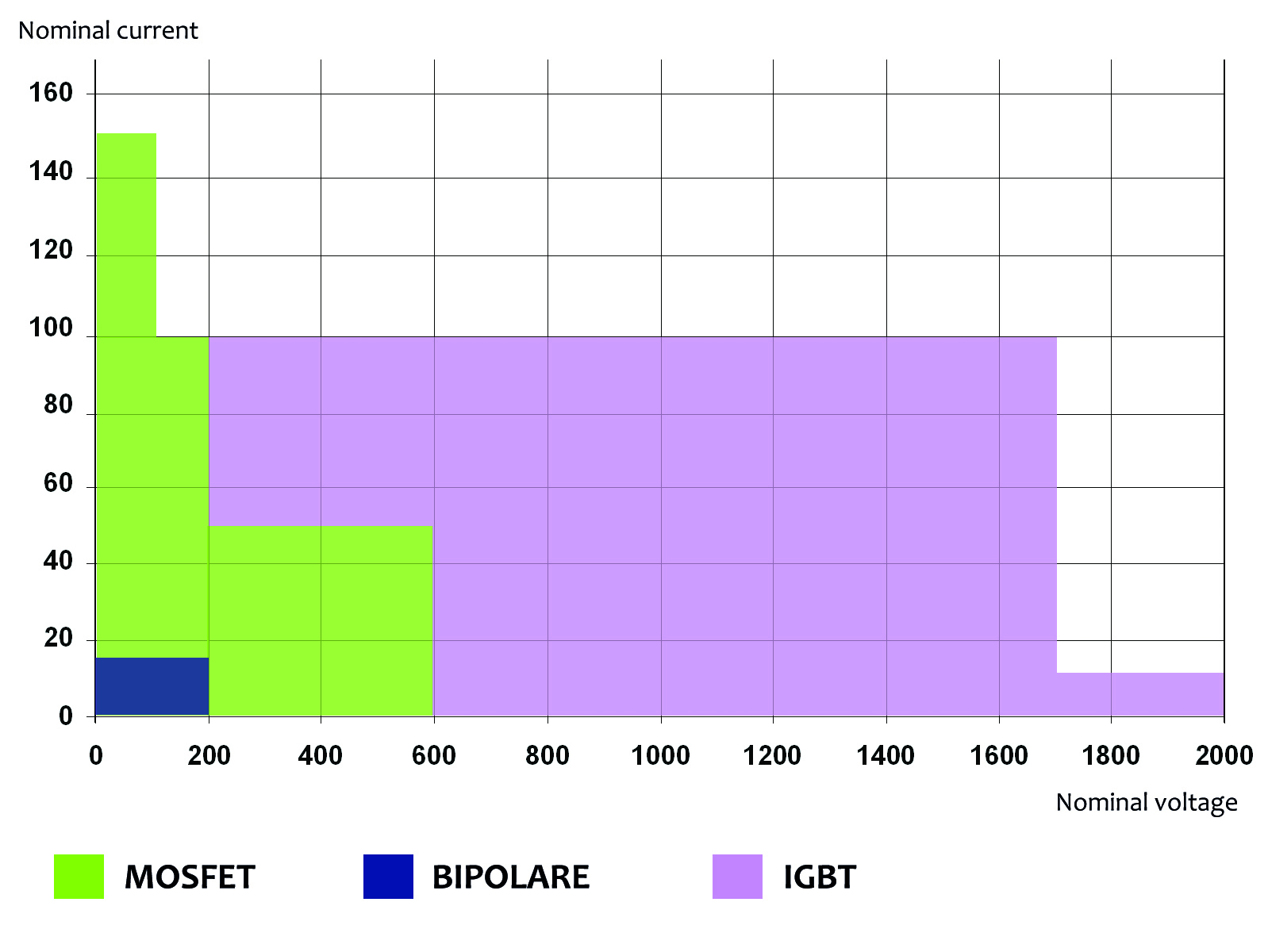
DC power supplies (converters like choppers, inverters, …)
Signal switching (testing equipment, …)
Electro-magnets (induction motor braking, …)
Heaters (air conditioning in trains, tramways, …)
Batteries (ships, solar systems, …)
DC Motors (travelling cranes, cranes, vehicles, …)
